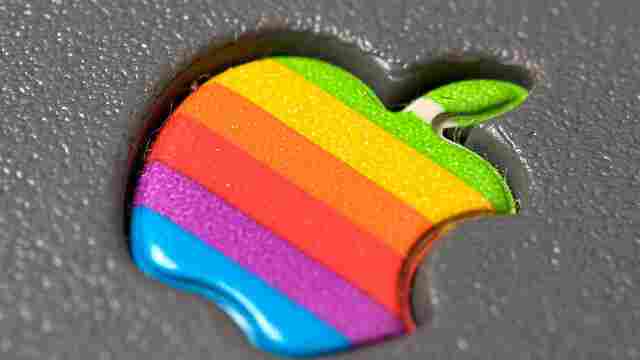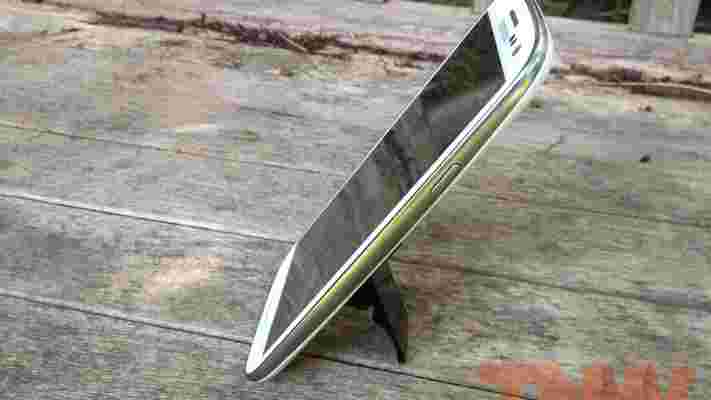Last week we told you about a tool that lets you root any HTC Android device . If you don’t like HTC, but are still on Android, then we have good news for you: there’s a script out toady that reportedly roots Android 4.0 (Ice Cream Sandwich) and Android 4.1 (Jelly Bean) on most devices. You can check it out over on XDA Developers .

As before, I’d like to emphasize that if you don’t know or understand the risks of rooting your device, please don’t do it. You’re going to have to follow through and there is always a risk of bricking your device, rendering it useless.
With that out of the way, here’s what XDA Recognized Developer Bin4ary , the script’s creator, has to say about it:
The steps for using “Root with Restore by Bin4ry” are very straightforward. Just download the script, extract it with your favorite tool, execute the RunMe.bat file, and follow the instructions it gives you.
The script is currently at version 3.0. Fortunately, Bin4ary is updating it with support for outlier devices that can’t be rooted in the way outlined above. If you’re willing to give it a shot, I would recommend reporting in the thread if your phone or tablet was rooted successfully (so it can be added to the list of supported devices) or not (so the script can be updated to support it). That way, this will become a great all-in-one tool for the latest Android devices, until Android 5.0 (Key Lime Pie) comes out, of course.
Image credit: stock.xchng
Here’s everything you need to know about Apple’s iPad Mini event
Apple announced the iPad Mini today and, as always, a whole lot more. The electronics giant packed in a huge slew of announcements in its hour-long presentation. In case you missed it, or in case you just want to get the important bits, we’ve put this guide to make sure you know about everything that came out of Cupertino today.

As expected , the event was very iBook-focused, so of course one of the first milestones Apple announced was that 400 million iBooks have been downloaded . The company also unveiled iBooks 3.0 and iBooks Author .
Soon after, Apple revealed it has seen over 35 billion App Store downloads , taking into account over 750,000 apps currently available to download. In the same vein, Apple confirmed it has now paid more than $6.5 billion to developers. Other tidbits include: 3 million new iPods sold, 200 million devices running iOS 6, and 3 billion iMessages sent .
The biggest statistic by far, however, was the revelation that Apple has sold 100 million iPads in just two-and-a-half years . That was “two weeks ago,” according to Apple CEO Tim Cook, who also declared that Apple has sold “more iPads in the June quarter than any PC maker sold in their entire lineup.”
The 7.9″ iPad Mini was what the whole event was all about, so without further ado: it will be available for pre-order beginning October 26 (this Friday) with WiFi models shipping November 2 (next Friday). Here’s the pricing structure: 16GB for $329, 32GB for $429, and 64GB for $529 . LTE models are also coming, but Apple didn’t say when, though it did reveal for how much: 16GB for $459, 32GB for $559, and 64GB for $659. Technical details and more are available here: A5 chip, 1024×768 display, and 10hr battery .
The 13″ Retina MacBook Pro is here. It’s 20 percent thinner, weighs 3.5lbs, is 0.75 inches thick, and features a 7-hour battery. All that jazz will set you back at least $1,699, and you can drop that cash today.
The 8th-generation iMac has an 80 percent thinner profile than the last version. It comes in 21.5″ and 27″ flavors, starting at $1,299 and $1,799, respectively. The former ships in November and the latter ships in December. Oh, and Fusion Drive for iMac is out .
The 4th-generation iPad features the new Lighting connector, an A6X chip, 10 hours of battery life, and an HD version of its front facing camera. It also includes LTE connectivity ( coming to EE and Sprint ) as well as improved Wi-Fi performance (up to twice as fast). Pricing remains the same.
Apple had a tough time topping the only 2012 announcement event that rivalled this one: its own iPhone 5 event . While the company once again saw many of its revelations leak, Cupertino still managed to keep the news coming, and as always, it wasn’t just one major announcement, but one big one followed by many smaller yet still important ones.
If all that wasn’t enough for you, check out our Apple channel for more news and analysis.
Image credit: Marcin Wichary
TNW Review: The Flygrip helps you get to grips with your portable gadgets…quite literally
With smartphone and tablet sales booming, accessory makers are constantly dreaming up new ways to make it easier to hold and better operate our gadgets, often in ways we have never dreamed of.

One such accessory is the Flygrip , a small hinged plastic grip that’s main function is it to make it easier for you to hold and use your smartphone, tablet or e-reader with one hand.
The inventor of Flygrip suggests the gadget can help you “read emails while holding your briefcase, jog on treadmill while reading the news and eat a sandwich while tweeting about eating.” After testing it out over the last couple of days, I can honestly say it allows you to do exactly that.
Yes, but don’t let that put you off.
The Flygrip is compatible with most handheld electronic products, utilising an adhesive 3M surface to fix itself to the back of your handset or Amazon Kindle. You might be apprehensive about fixing it directly to your $500 smartphone, but it is easy to remove (although it can’t be re-applied) and can of course be placed on the back of your case.
The bundled instructions suggest that you place the Flygrip at the bottom of your device where you would normally hold it. This actually means it won’t work on some smartphones that have smaller battery covers (namely some older handsets from HTC) as the grip will bridge the join between the chassis and the cover itself.
Again, this won’t be a problem if you use a case.
Once fixed, the Flygrip will automatically spring from the back of your device, ready for you to slide your middle and ring finger through and grip. If you like your phones to retain its thin profile, this could be a deal breaker. However, if you are someone that is happy to sacrifice some of its form over increased functionality, then the Flygrip has you covered.
Testing the Flygrip on the Samsung Galaxy S III, the accessory tightly grips your fingers, freeing up your thumb to reach all parts of its 4.7-inch display without having to shift it around in your hand. The grip isn’t too tight, meaning you can re-position your fingers to find the perfect position. It comes in three sizes, great if you have hands like the Incredible Hulk.
I tested the Flygrip while walking my dog, browsing my phone in bed and over a couple of days of normal everyday use. It took a while to get used to flicking the clip down to place in your pocket so that it doesn’t catch, but once you become accustomed to it being there, it’s a great addition to your handheld.
You’ll notice you get an extra few centimeters of reach when you use the Flygrip and one-handed swiping becomes a lot easier and your phone (or other device) will feel more secure in your hand. It’s not going to stop anyone from attempting to snatch your device when you use it in public, but the grip it provides means you can pull it away quickly and possibly evade such an attempt.
When you aren’t using your phone, the Flygrip can also double as a kickstand. Flicking the stand in one of two directions, you can stand your device in a portrait orientation — great if you like to check your device on your bedside table, stand it upright on your desk, if you want to watch a film or make a FaceTime or Skype call without having to hold it.
My Flygrip came bundled with an iPhone case, but you will be able to choose from an array of complimentary BlackBerry and HTC cases also. It won’t help if you want to use it on your Galaxy S III or Kindle, but it’s another hint that you could probably fix the Flygrip to a case.
At $29.95 , the Flygrip isn’t cheap.
However, it does ship in a variety of 8 different colours (hopefully matching the colour of your device or case) and comes with replacement adhesive strips, meaning you can always swap it between devices should you change your smartphone over time.
If the Flygrip was just a grip, the price-tag might put you off, but its ability to serve as a robust kickstand gives you another reason to consider taking the plunge.
It adds a few extra centimeters of thickness to your device, this is the reality you must accept before you decide to buy the Flygrip. If you grab yourself a case (or use one of the free protectors provided) and get used to how it works, you will soon recognise that its pros outweigh its cons.
